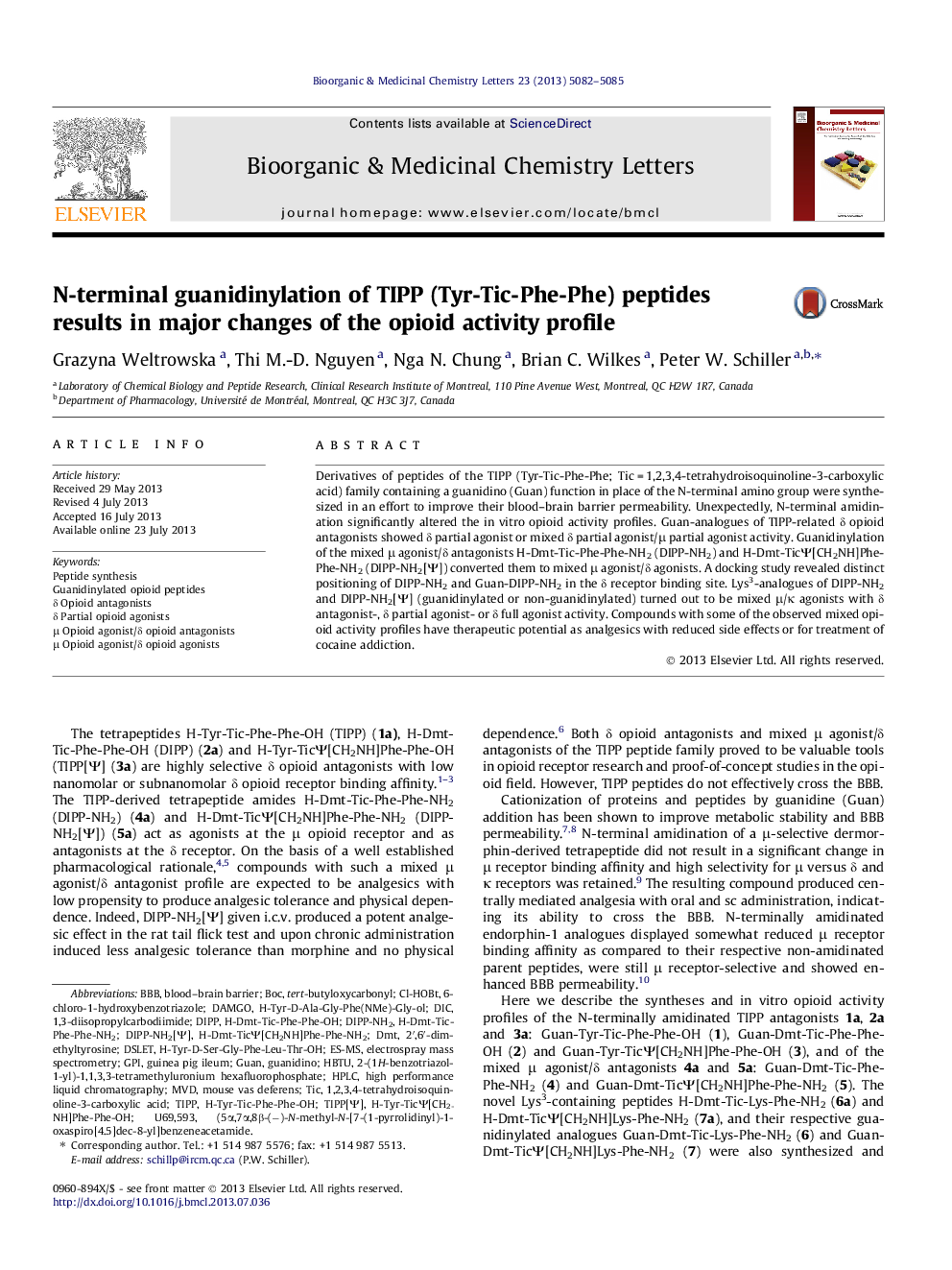| Article ID | Journal | Published Year | Pages | File Type |
|---|---|---|---|---|
| 10595080 | Bioorganic & Medicinal Chemistry Letters | 2013 | 4 Pages |
Abstract
Derivatives of peptides of the TIPP (Tyr-Tic-Phe-Phe; Tic = 1,2,3,4-tetrahydroisoquinoline-3-carboxylic acid) family containing a guanidino (Guan) function in place of the N-terminal amino group were synthesized in an effort to improve their blood-brain barrier permeability. Unexpectedly, N-terminal amidination significantly altered the in vitro opioid activity profiles. Guan-analogues of TIPP-related δ opioid antagonists showed δ partial agonist or mixed δ partial agonist/μ partial agonist activity. Guanidinylation of the mixed μ agonist/δ antagonists H-Dmt-Tic-Phe-Phe-NH2 (DIPP-NH2) and H-Dmt-TicΨ[CH2NH]Phe-Phe-NH2 (DIPP-NH2[Ψ]) converted them to mixed μ agonist/δ agonists. A docking study revealed distinct positioning of DIPP-NH2 and Guan-DIPP-NH2 in the δ receptor binding site. Lys3-analogues of DIPP-NH2 and DIPP-NH2[Ψ] (guanidinylated or non-guanidinylated) turned out to be mixed μ/κ agonists with δ antagonist-, δ partial agonist- or δ full agonist activity. Compounds with some of the observed mixed opioid activity profiles have therapeutic potential as analgesics with reduced side effects or for treatment of cocaine addiction.
Keywords
DIPP2-(1H-benzotriazol-1-yl)-1,1,3,3-tetramethyluronium hexafluorophosphateCl-HOBtDSLETES-MSHBTUtert-butyloxycarbonylBOCMVDTICGPiDICDMT1,2,3,4-tetrahydroisoquinoline-3-carboxylic acid1,3-diisopropylcarbodiimide6-chloro-1-hydroxybenzotriazoleDAMGOU69,593Electrospray mass spectrometryBlood–brain barrierBBBPeptide synthesisMouse vas deferensTIPPhigh performance liquid chromatographyHPLCGuinea pig ileum
Related Topics
Physical Sciences and Engineering
Chemistry
Organic Chemistry
Authors
Grazyna Weltrowska, Thi M.-D. Nguyen, Nga N. Chung, Brian C. Wilkes, Peter W. Schiller,
